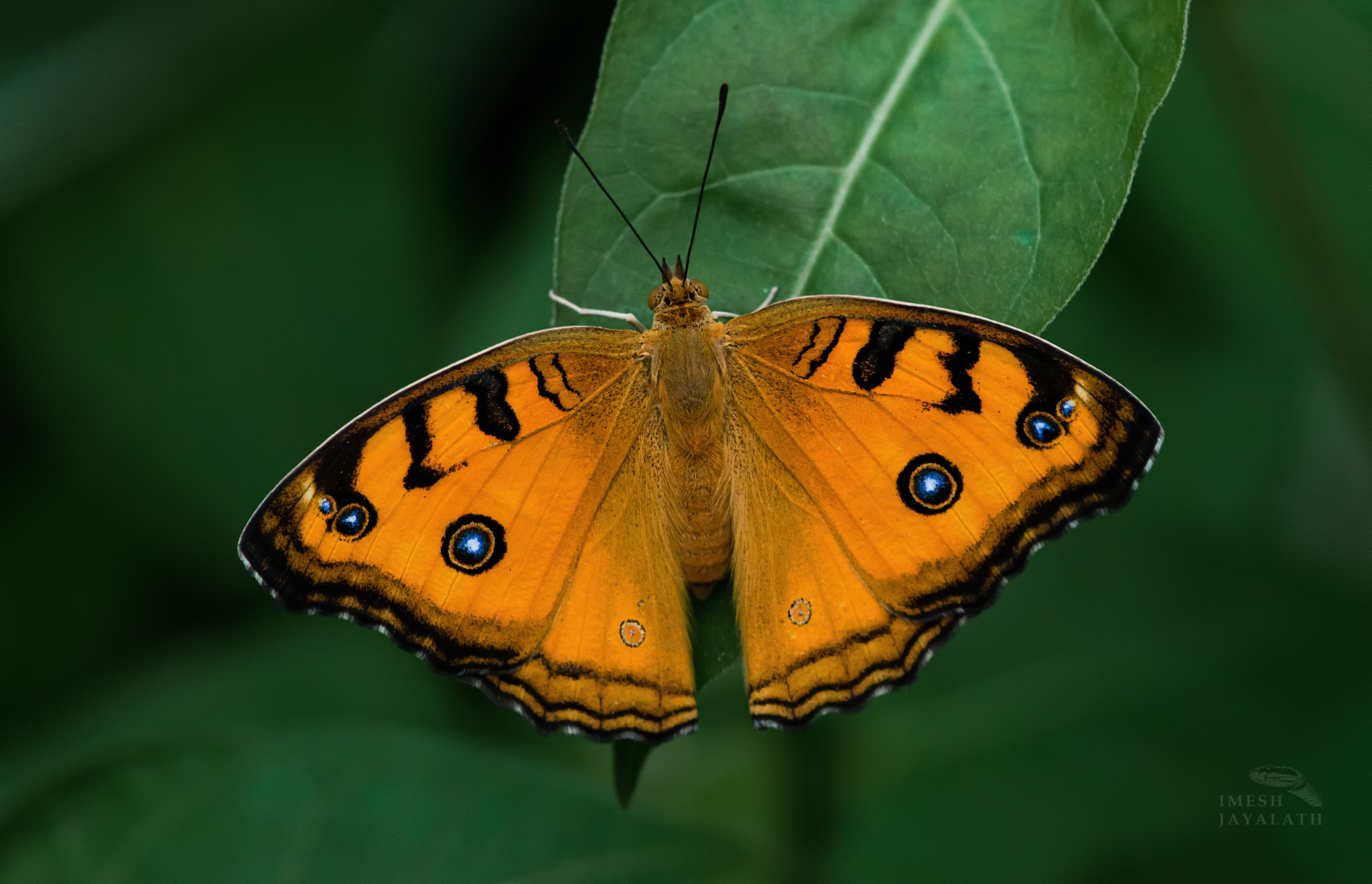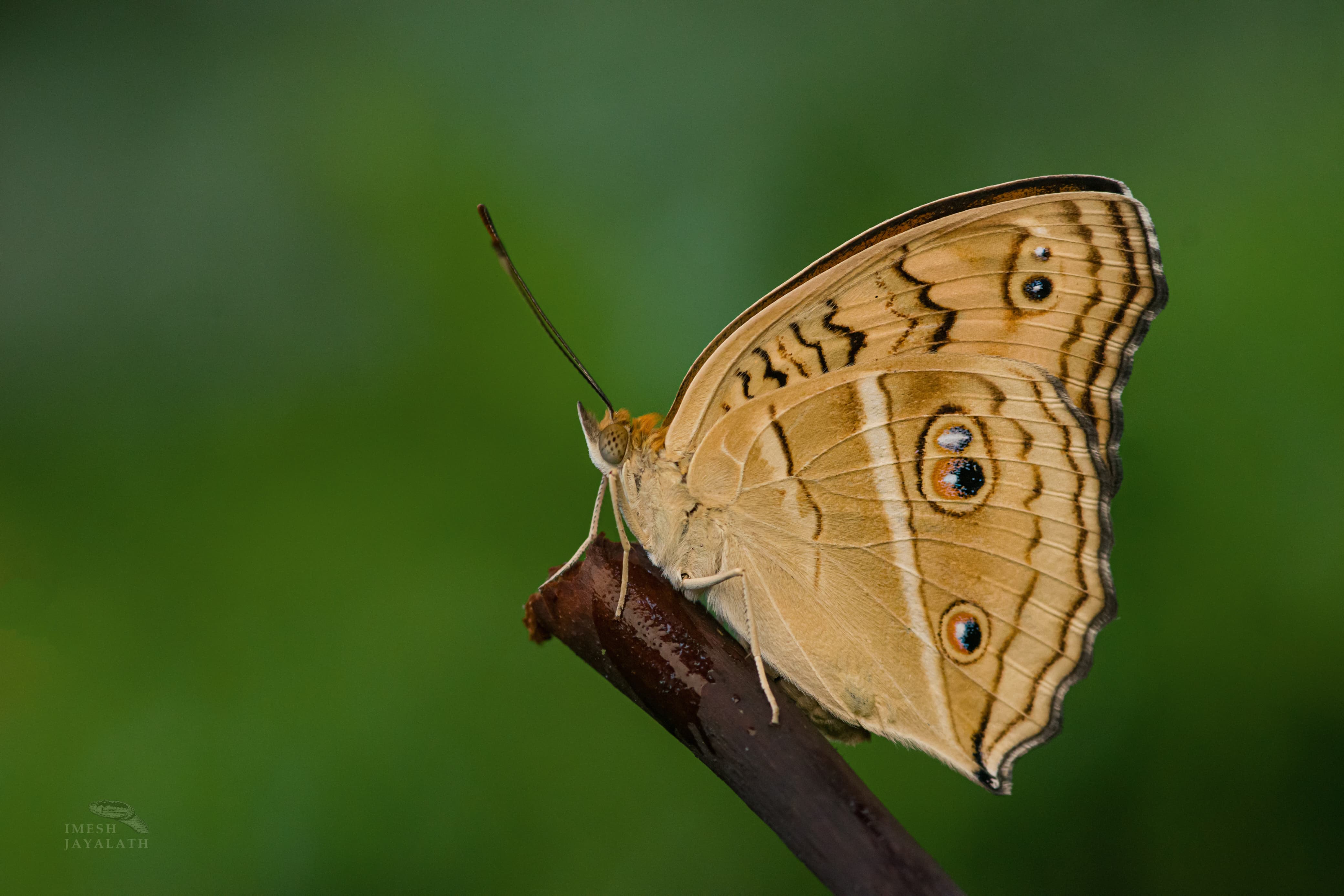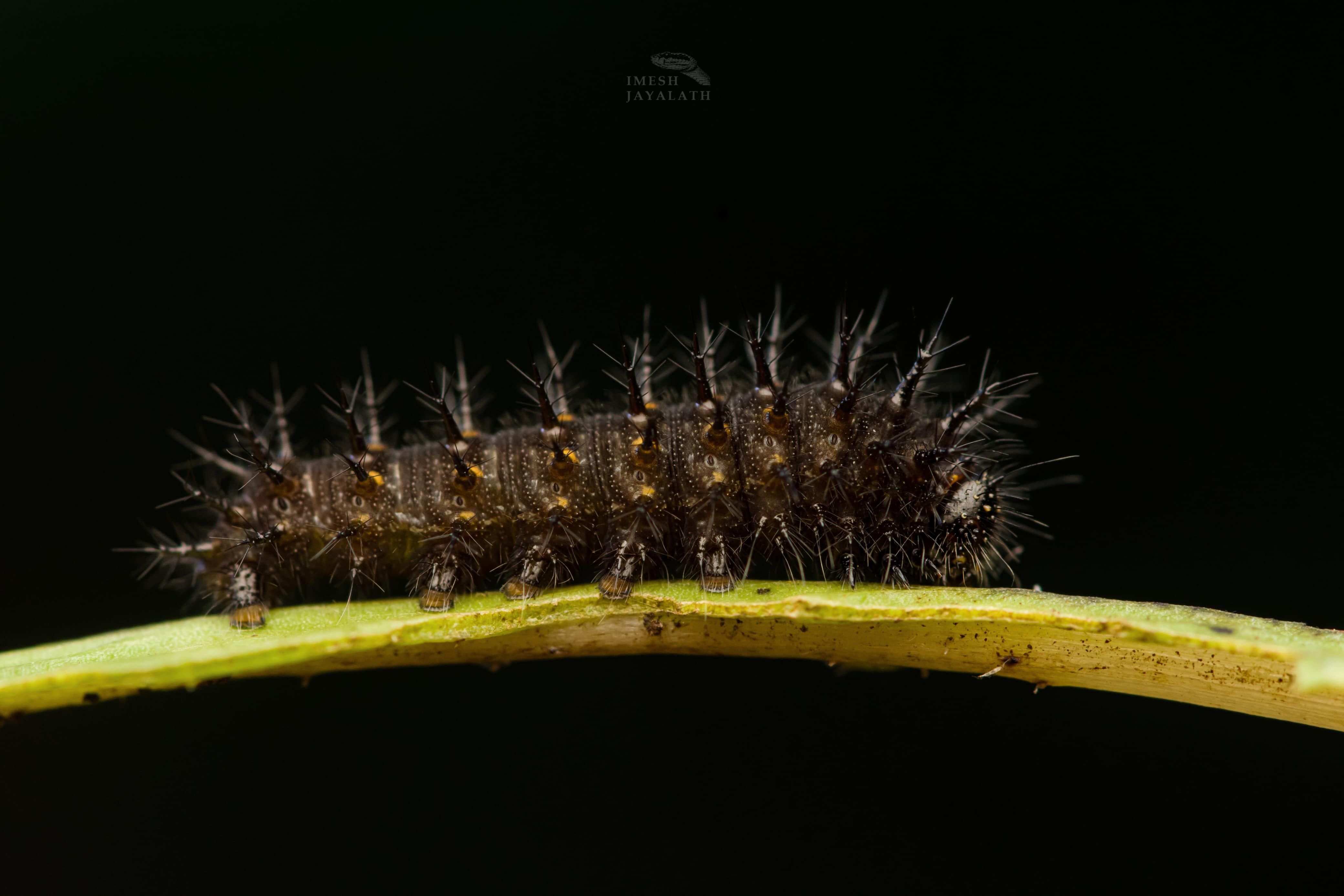
Contributor

Peacock Pansy (Open wings)
The Junonia almana, commonly known as the Peacock Pansy, is a striking butterfly species found in South and Southeast Asia, including India, Sri Lanka, and parts of China and Japan. This species exhibits seasonal polyphenism, with distinct differences between the dry-season and wet-season forms, primarily in the markings on the underside of its wings. The dry-season form is characterized by more subdued markings, while the wet-season form features additional eyespots and darker, more prominent lines, particularly on the wings' underside.

Peacock Pansy (Closed wings)
Adults of the Peacock Pansy have a wingspan ranging from 54 to 62 mm and display rich orange-yellow colors on the upper side of their wings. The forewings are adorned with dark markings and a large, white-centred ocellus, while the hindwings feature a large, pale yellow, black-ringed ocellus. On the underside, the dry-season form exhibits a variable ochraceous brown color with subtle dark bands, while the wet-season form has more defined markings and paler hues. Both forms share dark antennae and orange-brown bodies, but the wet-season form tends to be slightly darker overall.

Peacock Pansy (Larvae)
The larvae of the Peacock Pansy feed on a variety of plants, including species from the genera Acanthus, Barleria, and Gloxinia. The caterpillars are cylindrical with distinct blackish lines and are equipped with fine, branched spines. As pupae, they are short and thick, with a brownish-ochraceous color and short tubercular points on the thorax and abdomen. Despite its attractive appearance, the Peacock Pansy is listed as Least Concern by the IUCN Red List, indicating its stable population across its range.